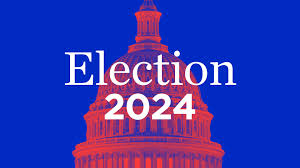Abstract The 2024 U.S. election cycle is heavily influenced by significant economic, social, and...

Stay relevant. Get exposure. Be known. Grow your credibility and your public profile. Through our powerful public relations strategy, we bring you publicity, we bring you a dedicated team working with you as partners in your business, and we bring you results. Whether you want to grow your business, increase your awareness or shape your story, let us put our PR services to work for you.
How We Help Public Relations Clients Get Noticed
Through our powerful public relations strategy, we bring you publicity, we bring you a dedicated team working with you as partners in your business, and we bring you results. Whether you want to grow your business, increase your awareness or shape your story, let us put our PR services to work for you.
Strategic communications
Strategic communication is the practice of planning and implementing messaging in order to help an organization achieve its goals. This requires a knowledge of public relations, internal communication, marketing, digital strategy, content strategy and more.
Strategic communication sits at the intersection of management strategy and communication, focused on the idea of purposeful messaging, whether between an organization and its employees or a nonprofit agency advocating for social issues. Its theories and practices help global marketing directors, public relations directors, corporate communication consultants, political operatives, chief branding officers, and other communication professionals plan, research, organize and execute internal and external communication initiatives that align with their organization’s values or mission, anything from improving internal training materials to launching a digital campaign for voting rights. Strategic communication can be delivered in a wide range of mediums, including press releases, social media posts, radio and television advertisements, internal memos, interviews, white papers, and more.
Every action undertaken by a PR professional should fall under strategic communication. This means all PR efforts are coordinated to help a company achieve its business objectives. Understanding an organization’s priorities from the outset is a must, with communications objectives and subsequent activities established to support these priorities.
Basic elements of strategic communications:
· Organization’s mission statement as the blueprint for your communications.
· Identifying key themes.
· Maintaining consistent messages for organizational strategies and business objectives.
· Keeping messages clear and simple
Media relations
Media relations in public relations is all about building relationships with members of the press. It typically refers to the mutually beneficial relationship between journalists and public relations professionals. A good working relationship with the media is needed to spread key messages to the target audience.
PR professionals can put clients into the spotlight by sending press releases and pitching interviews to the media outlets that enable these companies to reach their desired, most important audiences. Journalists need a consistent stream of news to fill their pages and airways, so creating compelling news stories for media involving the organizations looking for media exposure is a win-win for both parties.
In the last decade, communicators have gone from a single large-push channel (press releases) to dozens of options to reach journalists. Social media channels are the most used outside traditional PR channels, but even niche platforms offer access to journalists. With all this pitch machinery, communications professionals are prolific pitch engines.
Incorporating media relations in your PR strategy unlocks a myriad of opportunities for your brand. When you are quoted online, the journalist includes a direct link to your content and possibly your website. This will then drive considerable traffic and boost your research rankings. Over time, you expand your reach and strengthen brand awareness.
Crisis communications
Crisis communication can be defined broadly as the collection, processing, and dissemination of information required to address a crisis situation. Is an emerging field in applied communication studies and involves dealing with mediated messages and various types of audiences at moments of heightened pressure. Ethical questions are important considerations when a crisis occurs. In a crisis situation, corporate values that are important during times of normalcy and stability might not be as critical. For Instance, the normal emphasis on cost saving would no longer be appropriate when it is necessary to take urgent steps to save lives in a natural disaster.
Contrary to popular opinion, the communications team shouldn’t just be brought in when a crisis occurs; that is too late. Organizations should take a planned and consistent approach to crisis management, with a clear crisis communications plan in place and strong relationships with stakeholders and media built up over time which they can rely on at such times. This makes crisis communications as rewarding and valuable as it is challenging.
Stages of Crisis Communication:
Pre-crisis: Monitors crisis risks, makes decisions about how to manage potential crises, and train people who will be involved in the crisis management process.
Crisis: Collects and process information for crisis team decision making and create and disseminate crisis messages.
Post-crisis: Assesses the crisis management effort, and provides follow-up crisis messages as needed.
Public Affairs
Public affairs is a term used to describe an organization’s relationship with stakeholders. These are individuals or groups with an interest in the organization’s affairs, such as politicians, civil servants, customers and local communities, clients, charities, etc.
Public affairs work combines government relations, media communications, issue management, corporate and social responsibility, information dissemination, and strategic communications advice. Practitioners aim to influence public policy, build and maintain a strong reputation and find common ground with stakeholders.
Those who work in public affairs - or lobbying - build and develop relations between an organization and politicians, governments, and other decision-makers. It is a relatively distinct subset within PR, and those working in the field have a keen interest in the political system and the process for enacting legislative change. They can also add incredible value by assisting organizations in areas such as regulatory compliance, corporate communication, and trade associations.